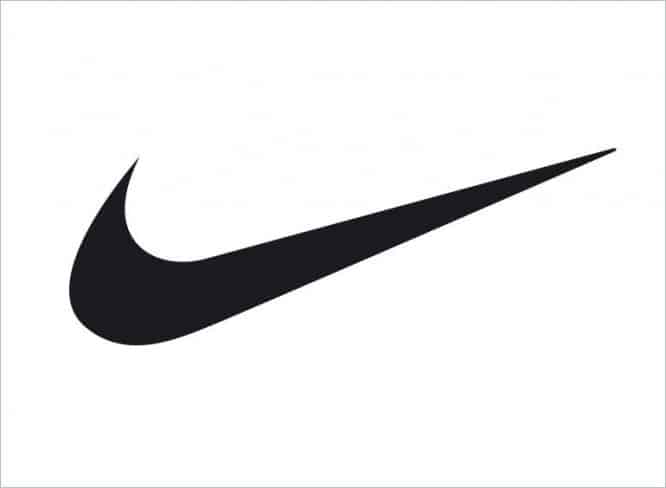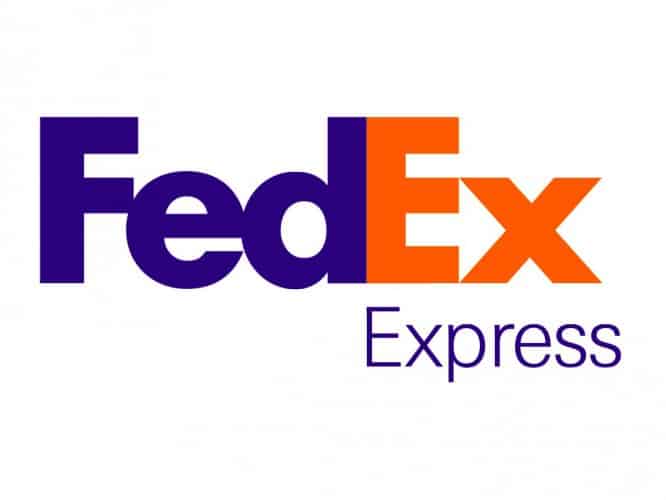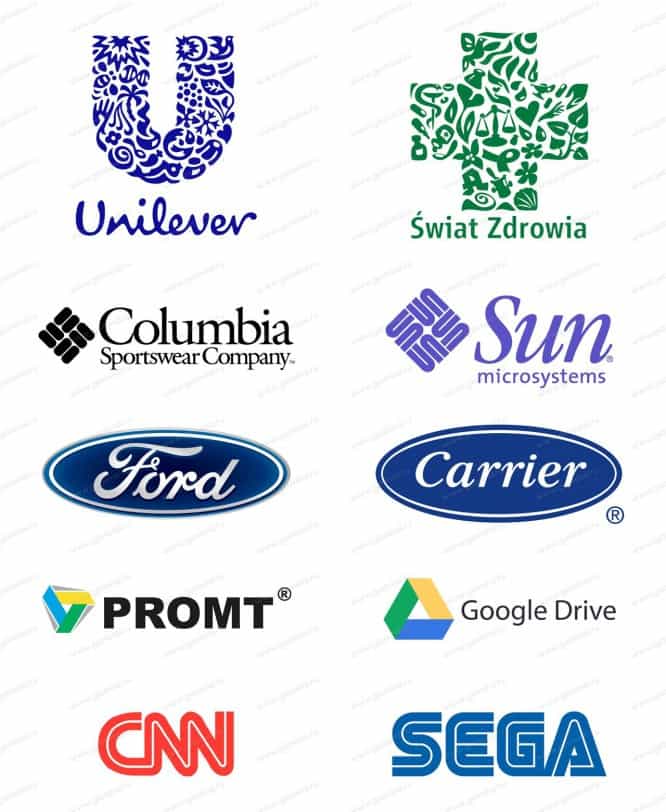5 popular logo design myths
5 popular logo design myths
In this article we will discuss five of the most common myths and try to dot the i’s.
Myth one: the logo should show the field of activity
Many entrepreneurs believe that their logo should definitely show what they do. Otherwise, how will customers know that this is a coffee shop logo if it doesn’t have a mug on it?
Look around: how often do you see a car on the logo of an automaker? Is the jacket on the logo of the jacket manufacturer? However, Mitsubishi is cars, Starbucks is coffee, and Apple is smartphones. Most of the time, your logo will be seen for the query “eat”, “buy a car” or “get a haircut.” A logo is a way to be recognizable, not an answer to the question “what do you do?” You can show the field of activity without using the logo. For example, decorate banners or showcase with photographs of food and drinks, or simply write the word “coffee shop” next to your logo.
The downside of logos that show the field of activity is the lack of ambition. Among your colleagues, you will always be just one of many. But, if it doesn’t matter, focus on what you do and catch traffic. If the goal is to develop your business to a level where any trademark will be associated with your product, then be original and do not be afraid to experiment.
Myth Two: The Value of a Logo in the Effort
Imagine that you have ordered a logo for a company that makes sportswear. Twenty thousand rubles are transferred to the freelance card. And now, two weeks later, he sends you a picture. It has this on it:

You, of course, ask the freelancer how many seconds it took him to do this … this “sniff”? And then make the logo redo a dozen more times so that the damned “designer” somehow worked out the money spent.
Such situations happen all the time and irritated customers can be understood. The dissonance between real money and a logo that is physically drawn in a couple of seconds is too great. Endless edits and alterations begin, and as a result, the first option is still the best. The problem is that many people don’t fully understand design and measure its value in the effort it takes.
Sometimes good things are good, not because they took years to create. If a logo is effective, it doesn’t matter how complex it is. Nike’s nozzle in the example above is an example of good design. And mistakes that the designer did not make are much more important than masterly work with graphics. Good design is invisible.
A logo without a corporate identity is useless. If you know where the logo will be used, you see the ideal image of the company and its audience, then you should contact a professional designer and order from him not only the logo, but the entire corporate identity of the company. And if you do not understand what it is about, you should contact a professional designer all the more. When there is a style, the logo ceases to be a “tick”, a whole concept is organized around it and therefore it brings objective benefits.
Myth three: There must be a hidden meaning in the logo.

Solving puzzles is great! The brain loves to work and we feel satisfaction from the solved problem. Logos with riddles and hidden meanings are common. To give a reference to the legend of the company, its corporate values is aerobatics for the creator of the logo. On the other hand, there are many more logos that have no hidden meaning. The reason is the lack of practical benefits.
On average, a person has about a second to notice a logo, while he hardly remembers details. In April, we conducted a small experiment in which passersby drew logos of famous companies from memory – Lacoste, Apple, Yota, Peugeot, Qiwi, Megafon and others. The experiment showed that people remember only the general features of well-known logos, sometimes finding it difficult even with the shape and color.
Despite this, once again seeing the logo on the sign, a person immediately recognizes it and identifies with the company. This is the meaning of design. Does the hidden meaning in the logo influence this process? I don’t think so.
The FedEx arrow, the Amazon smile, or the handshake between the customer and the manufacturer in the Hyundai logo became known only after the company itself became known. No one can say for sure whether the idea embedded in the logo helped them.
The presence of hidden meaning can be a nice addition, but you should not judge the logo by the presence of deep images. Moreover, in the pursuit of expressing some deep idea, you may lose the benefit that a simple sign brings.
The hidden meaning does not interfere if you use it organically. It looks cool, but it is definitely not a mandatory rule.
Myth # 4: Similar logos are bad.

Of course, if your logo is a copy of a competitor’s, that’s bad. Clients will be confused.
But bumping into originality for originality’s sake is no better. You may have such an original logo that they just won’t understand you. The client will turn to your calmer competitors. In addition, the field of activity always dictates certain standards that work as recognition of “friend or foe”. Take a look at the logos of coffee or car companies. There, the presence of common elements and similar logos, recognized as an absolute evil, is rather the rule.
The search for “plagiarism” is really interesting, but it does not affect the effectiveness of the logos of Puma and Jaguar, CNN and SEGA, Promt and Google Drive, Land Rover and Ford, Gucci and Chanel. You will never confuse these companies. It is a stereotype that the designer’s goal is to make each logo completely different from the others. The letter “A” looks like the letter “A” – and there is nothing you can do about it. The same goes for all graphic solutions, most logos differ from each other only in details.
Similar logos can be frustrating, but it’s not bad, it’s the only possible state of affairs. In the modern world, thousands of new logos appear every day, and all sorts of graphic techniques have already been tested.
This does not mean that you need to take and copy other people’s ideas. One has only to be more calm about the fact that you will no longer do something fundamentally new. Rather, there is something wrong with the logo, if among the millions of its colleagues you have not found a single one that even remotely resembles the “original”.
Myth 5: Logo is very important
Of course, the logo is important, but its importance is often overestimated. The logo will not hypnotize clients, no matter how cool the agency made it and how many of your colleagues said: “Cool logo!”. Remember, a logo is about as important to a company’s success as a beautiful face is to being successful at work. The logo should not be liked by everyone and does not need an endless number of discussions and rework.
For example, the latest rebranding of Pepsi was not to everyone’s taste, the logo allegedly became flat and lost its former flavor. On the Internet, the company was accused of a waste of money, betrayal of ideals and other deadly sins that have little to do with reality. As a result, Pepsi was banned in forty-seven countries around the world, the company went bankrupt, and the most important designer was shot! .. And if you don’t believe it, then you’re right. Because, in fact, nothing of the kind happened.
Style is more important than logo. A professional designer takes into account where the logo will be placed, selects corporate fonts and colors, creates a presentation in which he shows how the uniform of the employees, product packaging, signboard, website and whatever the customer wishes will be decorated.
One picture with a logo, no matter how beautiful it is, will not bring results. The mark will succeed if used correctly. It should be placed on signs, employee uniforms, products and other media designed in accordance with the corporate identity of the company. If successful, the logo is a great way to settle in the minds and make your symbol a “household name”. Millions buy Chinese T-shirts online simply because they feature a green Lacoste crocodile, or Nike’s all-over.
Output
All design myths are not based on empty space. However, strict rules are implied rather than actually exist. We analyzed the most common stereotypes associated with the role of a logo, what should be depicted on it, talked about plagiarism and the importance of corporate identity. Do not fight with windmills, let them show you the direction of the wind.
Video: “5 Popular Logo Design Myths”
Source: spark.ru
…

